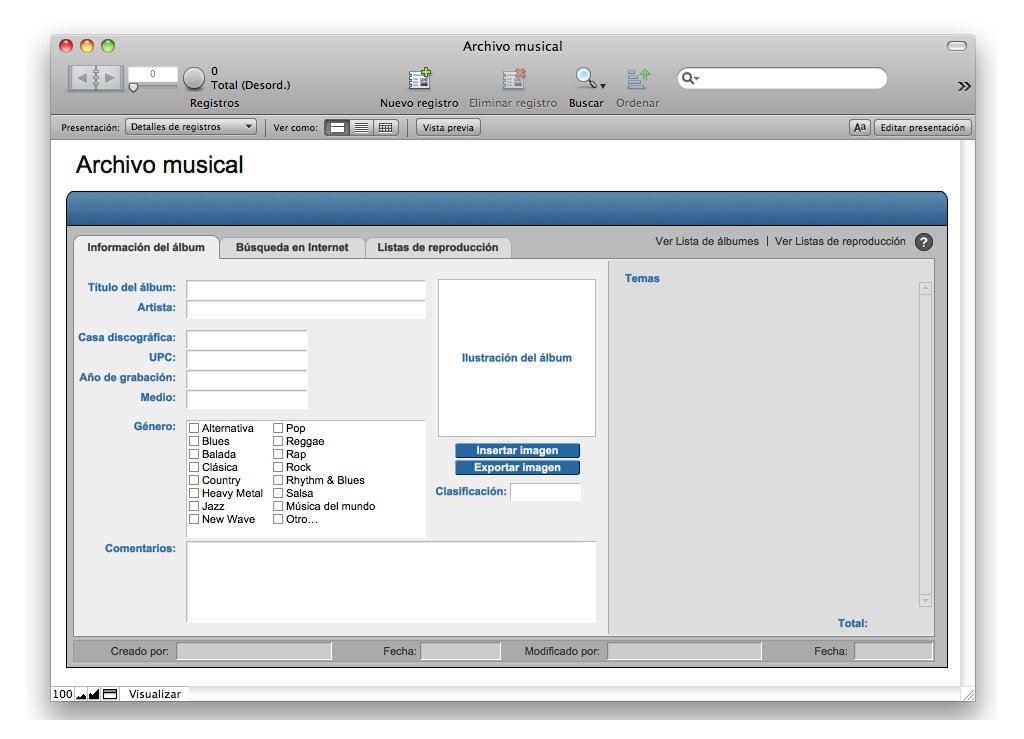


- #Filemaker server 13 upload database how to#
- #Filemaker server 13 upload database full#
- #Filemaker server 13 upload database code#
- #Filemaker server 13 upload database mac#
How to upload to FileMaker Server 12 or FileMaker Server 13 and aboveĤ. If you are integrating your own calendar, you can remove this file after you’ve finished testing your installation. My Calendar Solution is a fully implemented calendar solution.
#Filemaker server 13 upload database code#
It also hosts the necessary code for the calendar. SoSIMPLE Calendar Settings is where you go to configure your Calendar. Upload the two files, soSIMPLE Calendar Settings.fmp12 and My Calendar Solution.fm12 to your FileMaker Server. The sample calendar won’t work yet, until you’ve finished the next step.ģ. You can also test your cache from this page. Verify your installation by opening your browser on the web hosting computer to: You should see a welcome message from soSIMPLE Software.
FileMaker 12 or Multiple Server: add World Wide Web group (_www) with read & write access. FileMaker 13 and above, Single Server: add the fmserver user with read & write access. Mac: Click the Cache folder, choose “Get Info” from the File menu and hold the “option” key while you click “+” to: #Filemaker server 13 upload database full#
FileMaker 12 or Multiple Server: add IUSR or the IIS_IUSRS group with Full Control (details).FileMaker 13 and above Single Server: add the fmserver user, IUSR or the IIS_IUSRS (or whatever user you assigned to FMS during install) with Full Control (details).Windows: Right-click the Cache folder, choose Properties, then Security, then: The web server locations may vary depending on many factors, including having upgraded from previous versions of the OS, so double check with your server documentation, IT administrator, or IIS/Apache configuration files.įinally, you should make the “Cache” folder in the soSIMPLE folder writable by your web service: IMPORTANT NOTE: These are the manufacturer default web server locations.
#Filemaker server 13 upload database mac#
FileMaker 12, Mac 10.9: /Library/Server/Web/Data/Sites/Default.
 FileMaker 12, Mac 10.8 and before: /Library/WebServer/Documents. FileMaker 12, Windows: default installation is c:inetpub\wwwroot. FileMaker 13 and above, Mac: /Library/FileMaker Server/HTTPServer/htdocs (note: if you’re using ssl and use the path /Library/FileMaker Server/HTTPServer/htdocs/httpsRoot). Filemaker 13 and above, Windows: c:\Program Files\FileMaker\FileMaker Server\HTTPServer\Conf. If you are using a single-server configuration, put your folder in your hosted web server folder. If you are using a multi-server configuration, put this folder in your hosted web server folder and make the following change to the file config.php: Change the line that says “host” to reflect the IP address of your FileMaker Server. Where you put this folder will depend upon your Server Operating System, and your version of FileMaker Server. Put the soSIMPLE folder into your web folder Type in the following and restart your server processes.Ģ. FileMaker Server 17 and above: manually enable PHP using the command line on your server. FileMaker Server 13 – 16: Choose “Edit Deployment” from Server menu in the upper right of the Admin Console. FileMaker Server 12: Click “Edit Server Deployment” link in the lower right of the overview screen. You can generally do this while FileMaker Server is hosting clients. If not, make sure you have installed the original sample database that was installed with FileMaker Server and redeploy FileMaker Server. If the PHP test passes, you’re done with this step. Verify you’re set up for PHP by going to the FileMaker Server Technology Test page (choose “Open Test Page” from the Server menu in the Admin Console) and clicking “Test PHP Custom Web Publishing”. Make sure your FileMaker Server is deployed with PHPĪll versions of FileMaker Server 12 and above work with soSIMPLE Calendar Settings.
FileMaker 12, Mac 10.8 and before: /Library/WebServer/Documents. FileMaker 12, Windows: default installation is c:inetpub\wwwroot. FileMaker 13 and above, Mac: /Library/FileMaker Server/HTTPServer/htdocs (note: if you’re using ssl and use the path /Library/FileMaker Server/HTTPServer/htdocs/httpsRoot). Filemaker 13 and above, Windows: c:\Program Files\FileMaker\FileMaker Server\HTTPServer\Conf. If you are using a single-server configuration, put your folder in your hosted web server folder. If you are using a multi-server configuration, put this folder in your hosted web server folder and make the following change to the file config.php: Change the line that says “host” to reflect the IP address of your FileMaker Server. Where you put this folder will depend upon your Server Operating System, and your version of FileMaker Server. Put the soSIMPLE folder into your web folder Type in the following and restart your server processes.Ģ. FileMaker Server 17 and above: manually enable PHP using the command line on your server. FileMaker Server 13 – 16: Choose “Edit Deployment” from Server menu in the upper right of the Admin Console. FileMaker Server 12: Click “Edit Server Deployment” link in the lower right of the overview screen. You can generally do this while FileMaker Server is hosting clients. If not, make sure you have installed the original sample database that was installed with FileMaker Server and redeploy FileMaker Server. If the PHP test passes, you’re done with this step. Verify you’re set up for PHP by going to the FileMaker Server Technology Test page (choose “Open Test Page” from the Server menu in the Admin Console) and clicking “Test PHP Custom Web Publishing”. Make sure your FileMaker Server is deployed with PHPĪll versions of FileMaker Server 12 and above work with soSIMPLE Calendar Settings.







 0 kommentar(er)
0 kommentar(er)
